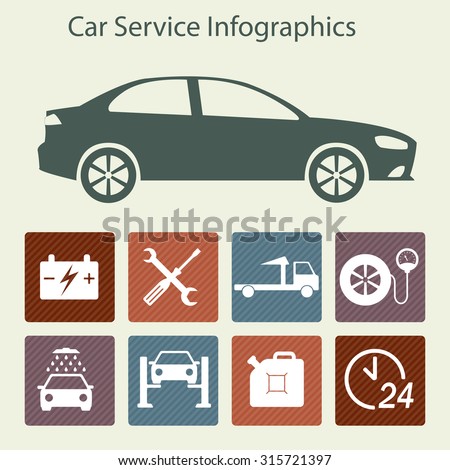Deciphering Your Vehicle'S Caution Indicators: What They Absolutely Represent
Deciphering Your Vehicle'S Caution Indicators: What They Absolutely Represent
Blog Article
Authored By-Higgins Corbett
When you're behind the wheel, those glowing caution lights on your control panel can be a bit complicated. Do you understand what they're trying to inform you regarding your vehicle's health? Recognizing the value of these lights is important for your safety and the long life of your car. So, the following time among those lights appears, wouldn't you wish to analyze its message properly and take the essential actions to address it?
Common Warning Lights and Interpretations
Recognize typical caution lights in your auto and comprehend their definitions to guarantee risk-free driving.
The most normal warning lights consist of the check engine light, which signals concerns with the engine or emissions system. If this light comes on, it's crucial to have your lorry checked quickly.
The oil pressure alerting light suggests reduced oil stress, needing prompt interest to prevent engine damage.
A blinking battery light might suggest a faulty charging system, potentially leaving you stranded if not attended to.
The tire pressure tracking system (TPMS) light signals you to low tire pressure, affecting car stability and gas effectiveness. Disregarding this can cause harmful driving problems.
The ABS light suggests a trouble with the anti-lock braking system, compromising your capability to quit promptly in emergency situations.
Last but not least, the coolant temperature level warning light warns of engine overheating, which can lead to severe damages if not resolved quickly.
Comprehending these usual caution lights will certainly assist you attend to concerns quickly and preserve safe driving problems.
Value of Prompt Interest
Recognizing the typical warning lights in your car is only the first step; the significance of promptly dealing with these cautions can't be stressed sufficient to ensure your safety and security when driving.
When a warning light brightens on your control panel, it's your vehicle's method of communicating a prospective concern that needs focus. Disregarding these warnings can lead to more severe problems down the road, jeopardizing your safety and potentially costing you a lot more out of commission.
car detailng to alerting lights can avoid failures and accidents. As an example, a flashing check engine light might suggest a misfire that, if left neglected, could cause damages to the catalytic converter. Addressing this immediately can save you from an expensive repair work.
In https://ricardotojdx.blogoxo.com/30401293/an-important-manual-describing-the-essential-tools-for-every-single-car-service-center-exposing-the-methods-that-add-to-reliable-lorry-upkeep , a brake system warning light might signify reduced brake liquid or worn brake pads, essential parts for your security when driving.
DIY Troubleshooting Tips
If you observe a caution light on your dashboard, there are a couple of DIY troubleshooting pointers you can try prior to seeking specialist aid.
The initial step is to consult your cars and truck's manual to comprehend what the certain caution light suggests. Occasionally the problem can be as simple as a loose gas cap causing the check engine light. Tightening up the gas cap may deal with the trouble.
An additional typical concern is a reduced battery, which can activate various advising lights. Inspecting the battery connections for rust and ensuring they're safe may repair the issue.
If a warning light persists, you can attempt resetting it by separating the car's battery for a few mins and then reconnecting it. In addition, inspecting your car's fluid degrees, such as oil, coolant, and brake fluid, can aid troubleshoot advising lights associated with these systems.
Conclusion
In conclusion, understanding your automobile's caution lights is vital for maintaining your car running smoothly and safely. By immediately attending to these informs and knowing what they imply, you can prevent pricey repair work and possible failures.
Keep in mind to consult your auto's handbook for particular information on each warning light and do something about it accordingly to make sure a hassle-free driving experience.
Keep notified, stay safe when driving!
